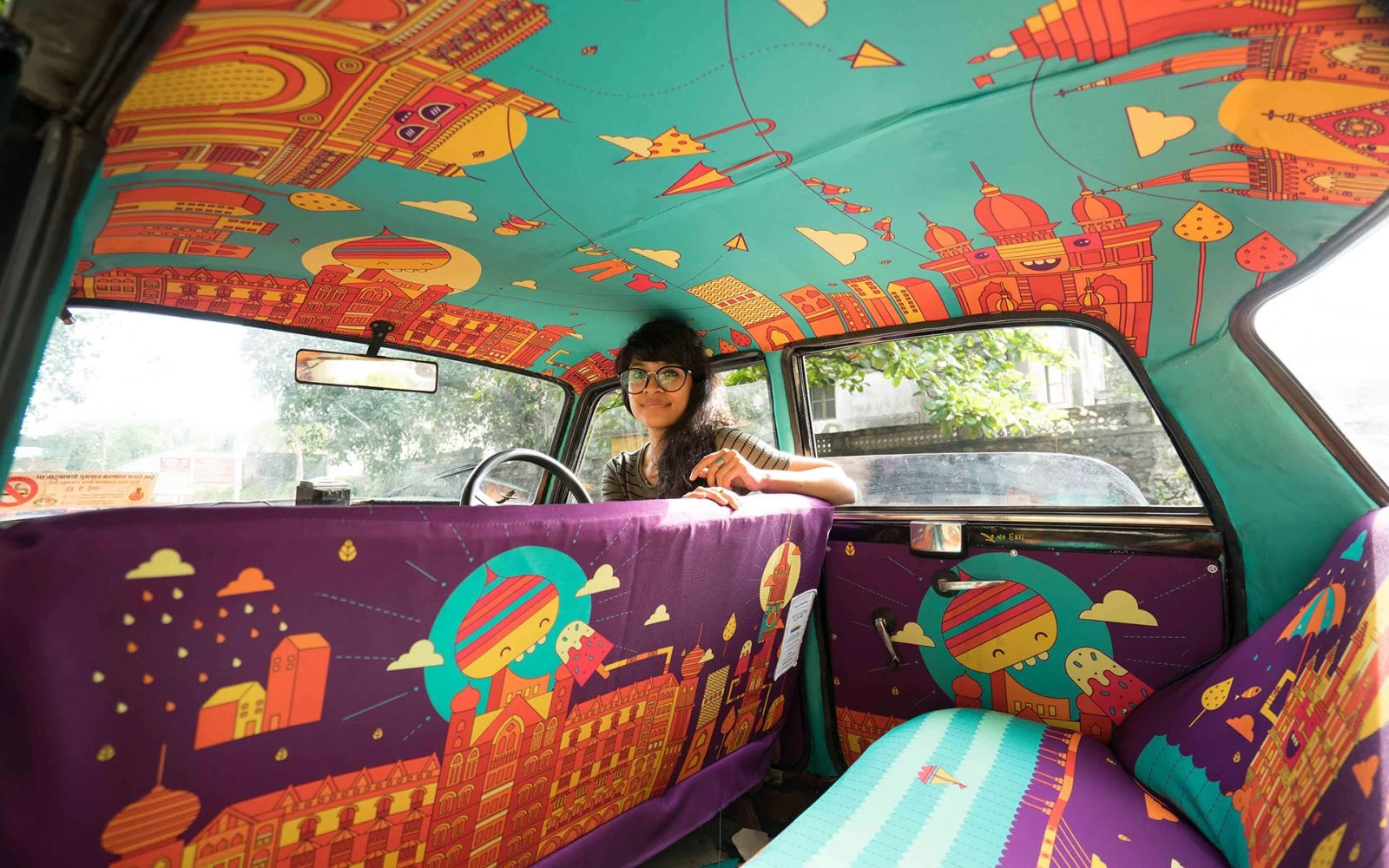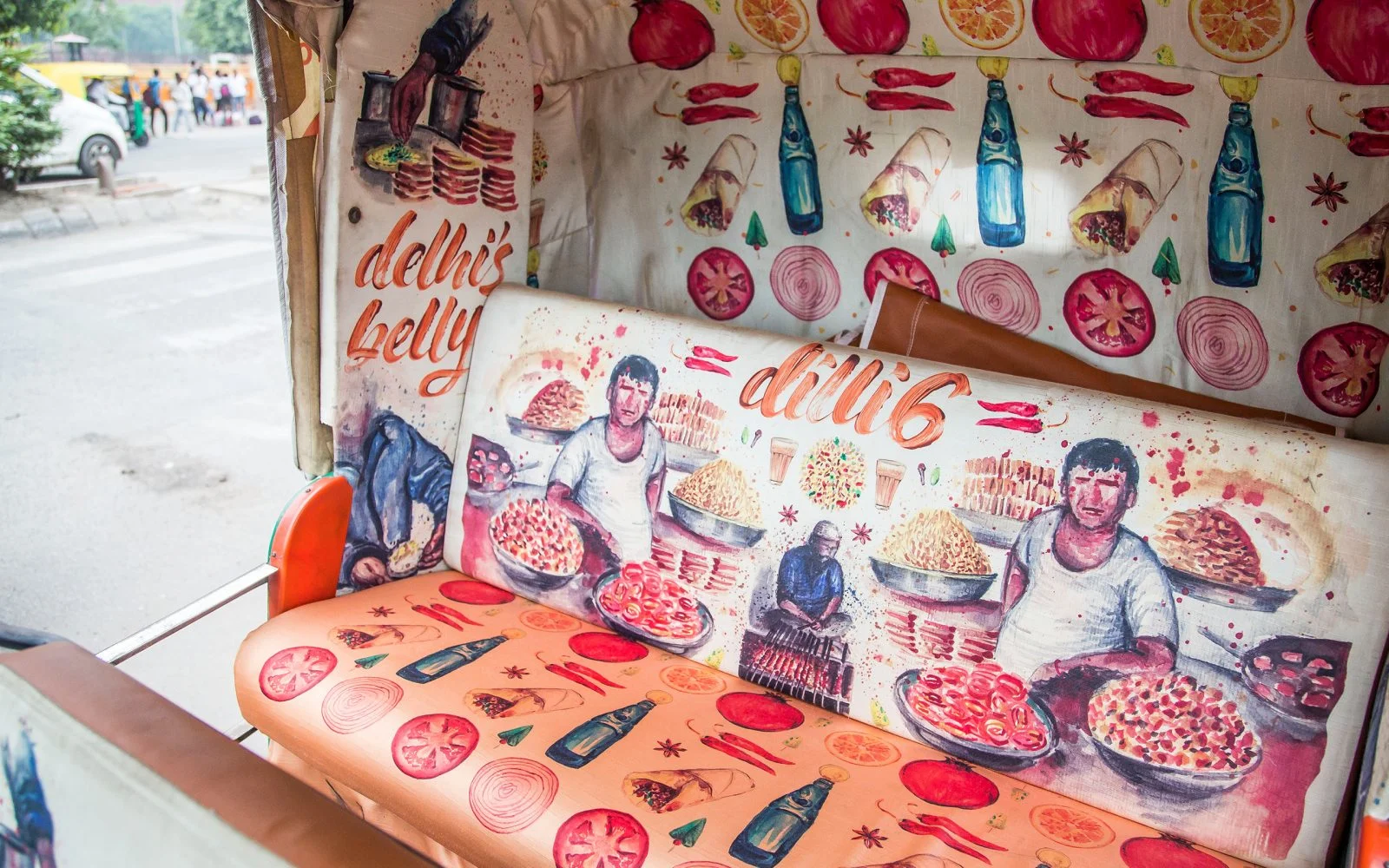
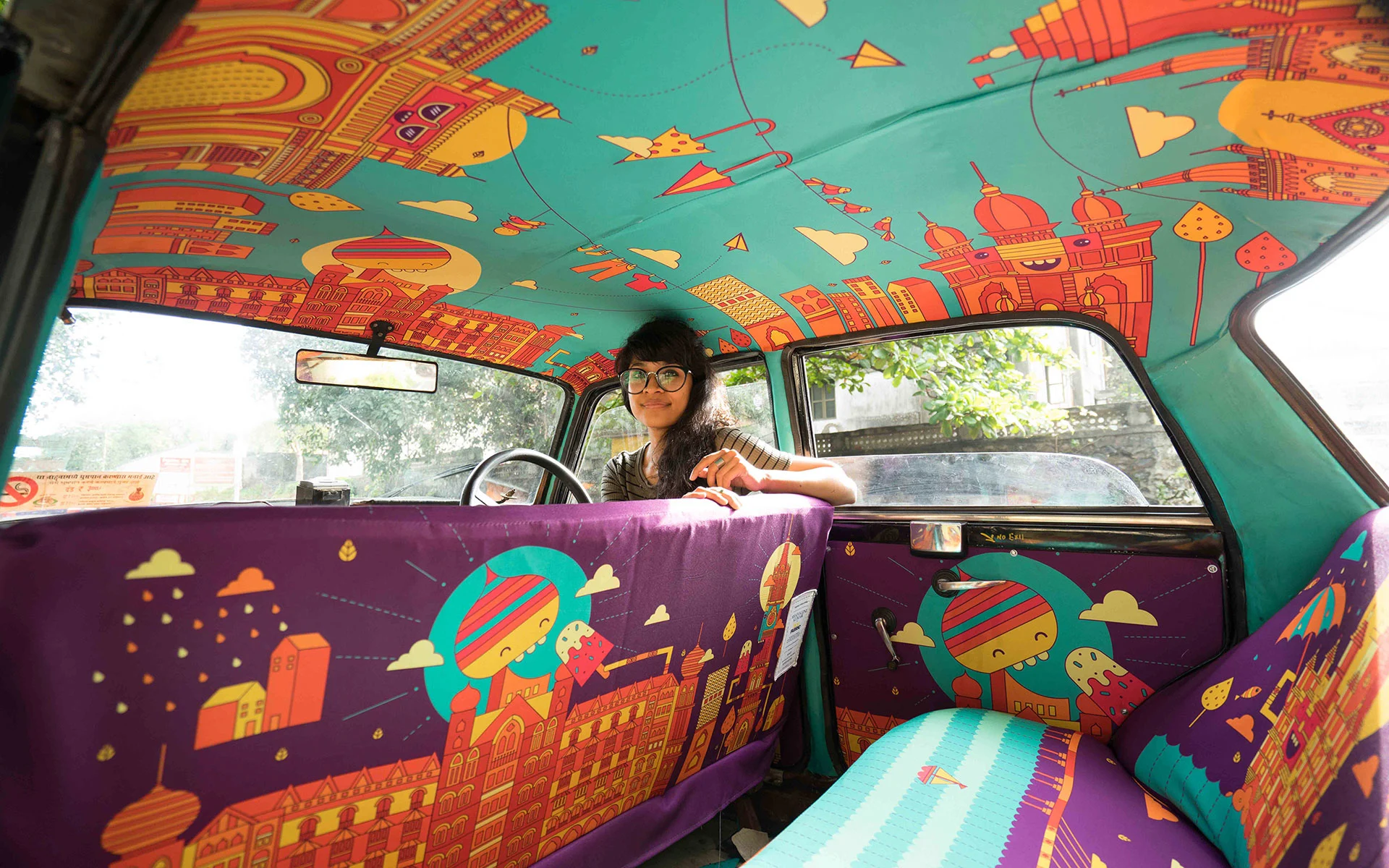
In India, the taxis in Mumbai are almost as iconic as the yellow cabs in New York and the black cabs in London. They’re partially black, partially yellow, and make up an important part the of the city’s landscape. But what makes them really special is their colorful interiors – the drivers pick the fabrics themselves, giving each taxi a distinct look.
When Sanket Avlani, a designer at Wieden & Kennedy, saw these interiors, he realized that a lot of creatives would be thrilled to design one. And so, Taxi Fabric was born. With three others, he made five prototypes, put everything on Kickstarter and got funded.
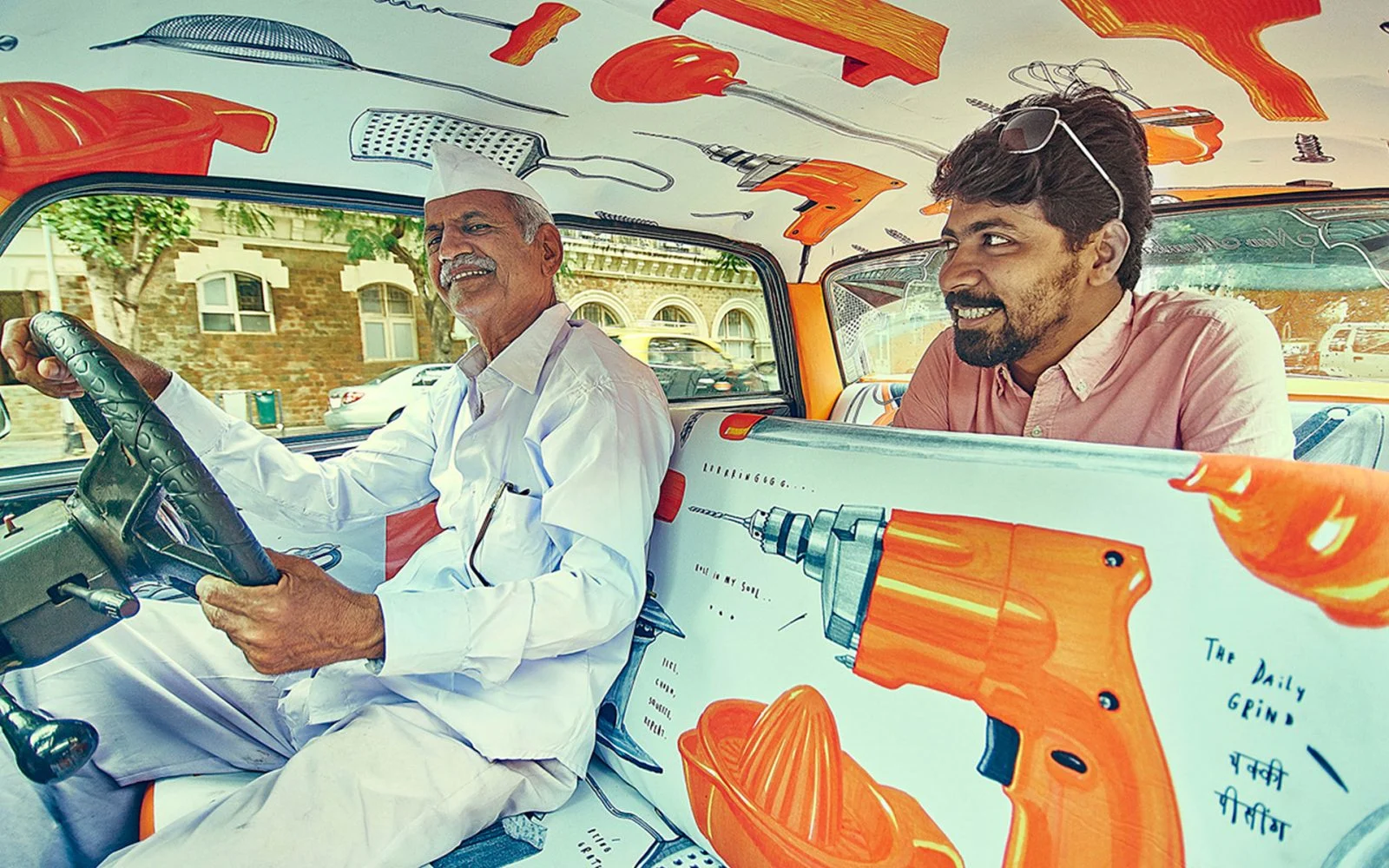
Now, every interior is designed by a different creative. After receiving funding through Kickstarter, the project has received support from brands, foundations, and NGOs (amongst them Google India), which has resulted in more than 60 unique design collaborations so far.
The fabrics are unique, super vibrant and always tell a story. For example, designer Safomasi merged art deco motifs with Mumbai-specific elements to celebrate the city’s diverse and vibrant energy. Pragun’s Delhi Belly depicts delicious street food specialties of the city’s Chandi Chowk area.
“Every city has a different aesthetic. We like to take the culture of the area, put it in the fabric and let it travel,” Sanket explains. Currently the organization operates in Mumbai and Delhi, but has plans to expand to other cities in India.
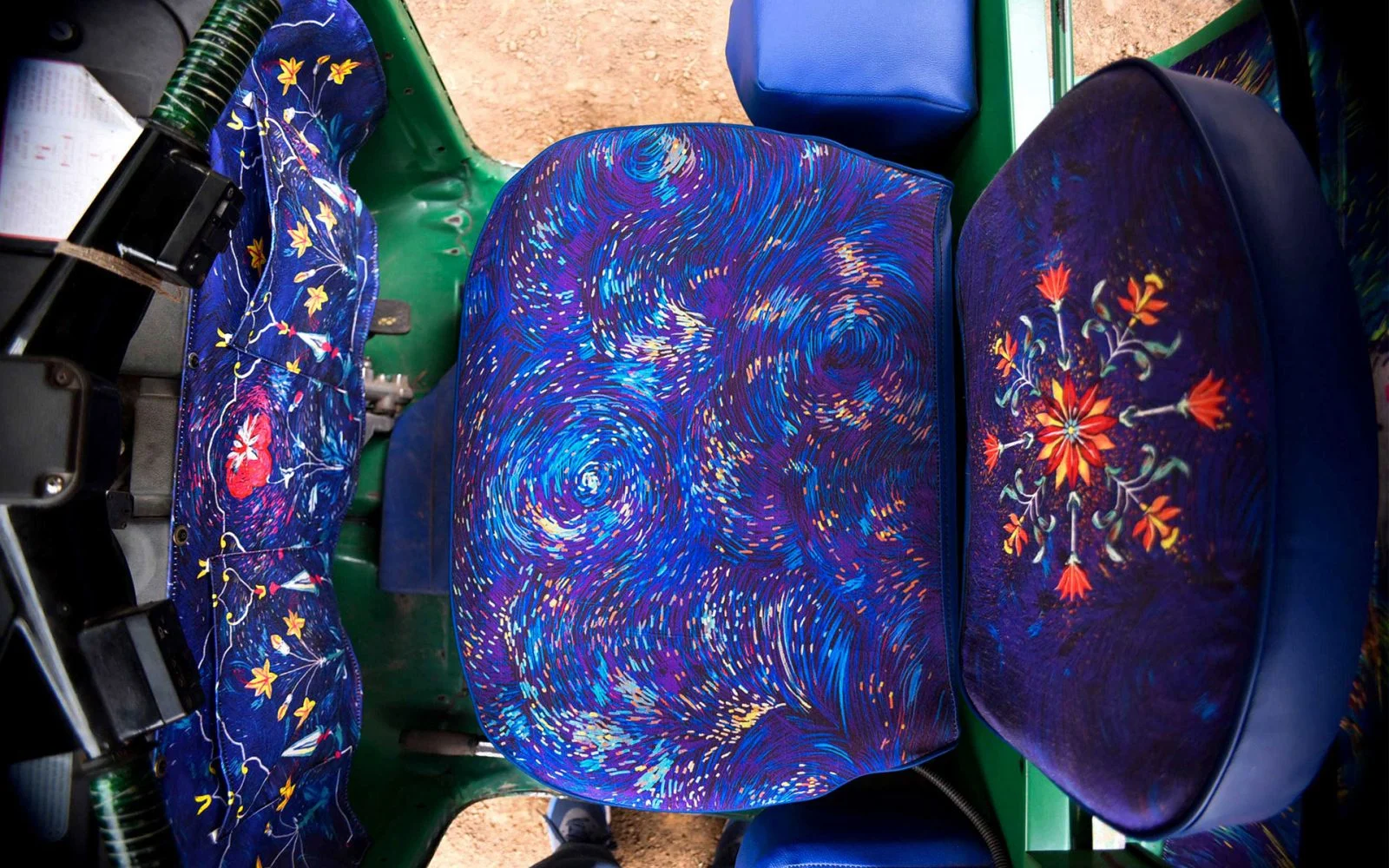
A designer has about three to four weeks to work on a piece, while the production is handled by Taxi Fabric and their vendors. The biggest challenge is making something that appeals to a wide range of people. “It’s literally all layers of society that take taxis, and it’s a challenge to make something really simple and visual that’s easy to communicate.”
One of Taxi Fabric’s goals is to shine a light on India’s design community, as it doesn’t always receive the appreciation it deserves. The organization has noticed that it can be hard to convince people the design profession is worth investing in. “It’s all very functional, design is not looked at as a differentiator,” says Sanket.
And so recently Taxi Fabric started to do workshops, mostly with college students. “There is a lot of upcoming design talent in India, and by giving their work a platform, we initiate interaction between them,” Sanket explains.
Although changing the way people see design in India is a challenge, the vibrant interiors definitely open up a conversation around it. And that’s exactly what the founders intended, brightening up the cities’ surroundings along the way.


